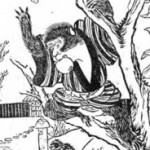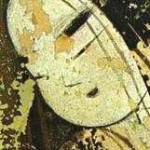By the 15th century, the role of women in Japan changed significantly. For a long time before then, women inherited their parents property, then the law of primogeniture was defended by Confucianism and Buddhism. Don’t get me started on that… More recently, the Boshin War (1868-69) also witnessed the fighting spirit of Japan’s samurai-class women. After a month-long siege, the Aizu region surrendered. Its samurai went to prisoner of war camps, and the domain was divided up and redistributed to imperial loyalists. … Continue reading →
Category Archives: Blog
Superstitions and Tales

Superstitions and Tales There was an old belief that persimmons have magical powers that bring the birth of children and a good harvest. Incidentally, there is a Japanese saying, “Saru mo ki kara ochiru.” This means, “Even monkeys fall out of trees,” or as the English expression has it, “Pride comes before a fall.” Once upon a time there was a crab who picked up a rice cake, and a monkey, who had a hard persimmon-seed, came together, and who begged the crab to exchange… Continue reading →
Japanese Superstitions

The Heian Period of Japan is considered the Golden Age. It is also a great age of superstition, magic and mantic practices. Did you know that the number 4 is unlucky In the Japanese culture? At the time of Pillow Book of the Flower Samurai everyone believed that the ghosts of the dead, if not properly buried and prayed for, would haunt and even kill anyone who did not honor them. The Chinese zodiac, adopted by the Japanese, which some of you may have… Continue reading →
The Infamous Samurai Sword
What’s faster than a speeding bullet? Well, what’s faster than a speeding BB? Yes! The Japanese sword and this incredible artist. Take a look at this video and see how astounding this is: Real Samurai Sword Technique – by Isao Machii – Japanese Katana Kenjutsu The Japanese sword is quite frankly—perfection. And it was in the Heian period that it became so. Japanese iron ore is different than everywhere else. The steel and the method of forging combined… Continue reading →
THE ENDS AND THE MEANS
THE ENDS AND THE MEANS There are hundreds of books, thousands of books on how to write. And many of them are important. But if we pay attention to details ONLY we can lose. (As e. e. cummings says, “he who pays attention to the syntax of things, will never wholly kiss you.”) In one of my critique groups, when we get a new piece of writing to evaluate, if it is, for lack of a better word, “good,” we get into the writing and… Continue reading →
More Pillow Books
Murasaki at her desk shown in a 19th century ukiyo-e. Pillow books in Heian Japan were really diaries called nikki. Donald Keene in Seeds in the Heart devotes an entire chapter to “Heian Diarists.” Why? Because, they were “personal rather than public and the best-known examples…” were written by Heian women of the court. The earliest Heian diary cited is Travel Diary of a Pilgrimage to China in Search of the Law (nittō guhō junreikōki). Written by the Tendai priest Ennin who lived early… Continue reading →
What is a pillow book?
Why is Pillow Book of the Flower Samurai a pillow book? What is a pillow book? Has anyone read or seen the movie of “Memoirs of a Geisha?” Remember when Chiyo, or later Sayuri, practiced to sleep on a pillow, basically a neck rest, so she would not disturb her hair? In ancient Japan, people did sleep on these hard pillows. I knew basically what they looked like, and I believe these are a fairly typical pillows: The pillow on the left is an… Continue reading →
Colors of Our Sleeves
While the Heian times of Japan were glamorous, they maintained strict rules of dressing. Your rank and status determined each garment’s fabric. In the winter garments were quilted, and in the summer, stiffened silk kept the clothing away from the body. So much importance was given to the way people dressed, it could make or break your career and/or your reputation. Color combinations, set by the season or festivals, held a particularly important aspect of dressing. Colors were also restricted by rank. For example only… Continue reading →
The Quest for Beautiful, Sexy Hair
A woman’s hair is considered not only beautiful but sexy and seductive.Orthodox Jewish women cut their hair when married in order not to be attractive to other men. Muslim women frequently wear the hijab to show modesty and to cover the décolleté and their hair.Christian women often wear a hat to cover their heads (in order to hide their hair during the service)? I don’t cover my hair. In fact, I often say I spend more money on my hair because I wear mine… Continue reading →
Being Beautiful

The aristocratic female in Heian Japan also suffered for beauty. We don’t? High heels? Plucking our eyebrows? Desperately trying to fit into the international/New York model ideal of an adolescent body with huge eyes and bulging lips and longer-than-possible legs? The aristocratic females in ancient Japan also held an ideal beauty. They needed to be plump, rounded faces were more attractive than gaunt ones, narrowed eyes, thin noses, and above all long, long shiny, thick black hair. It was common for women to be able… Continue reading →